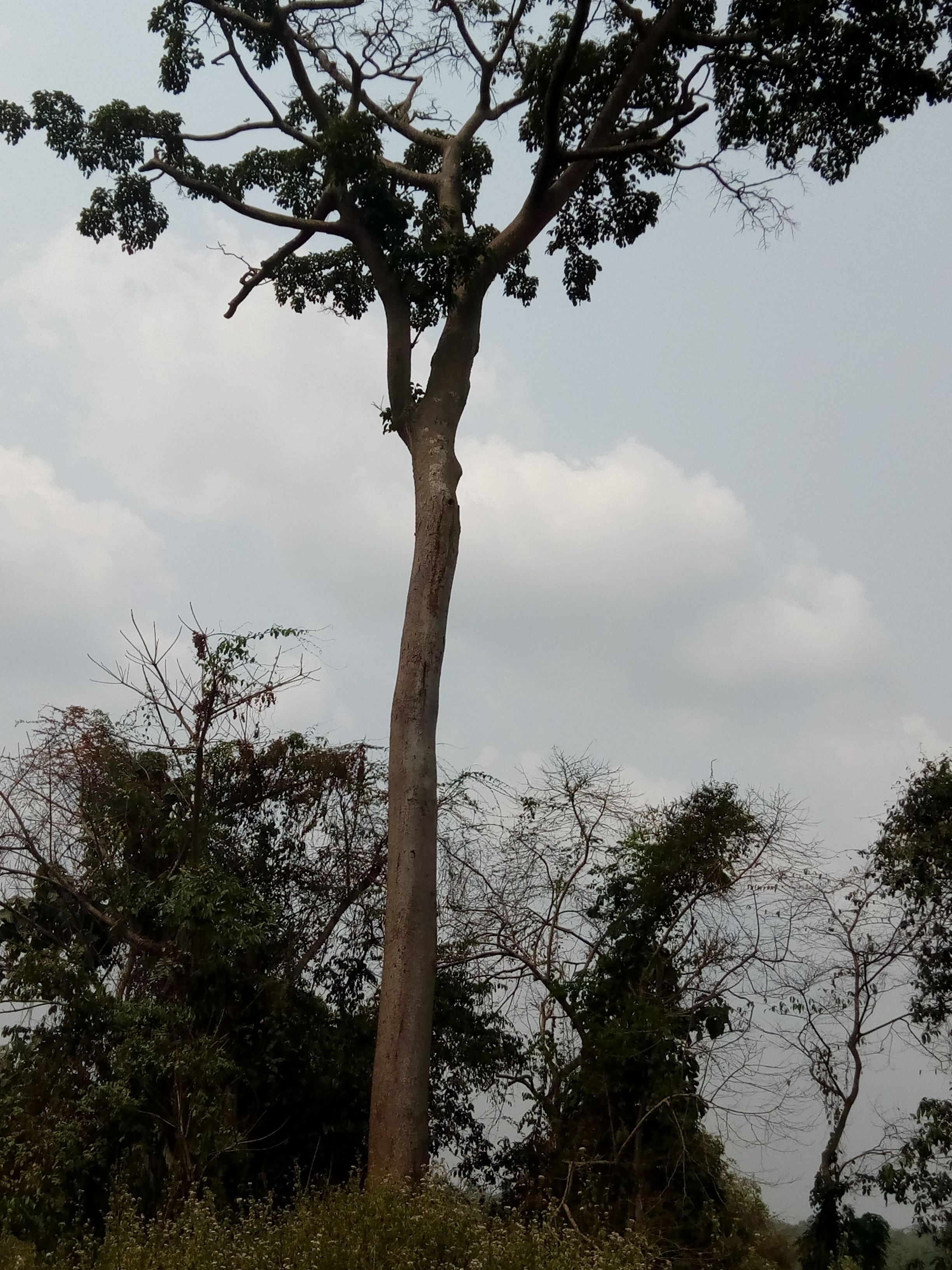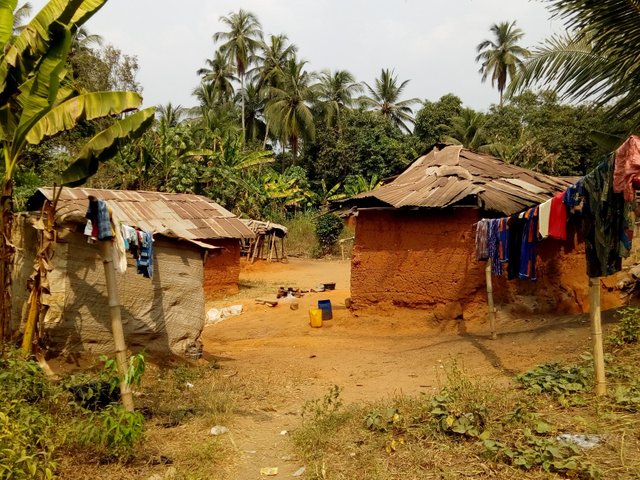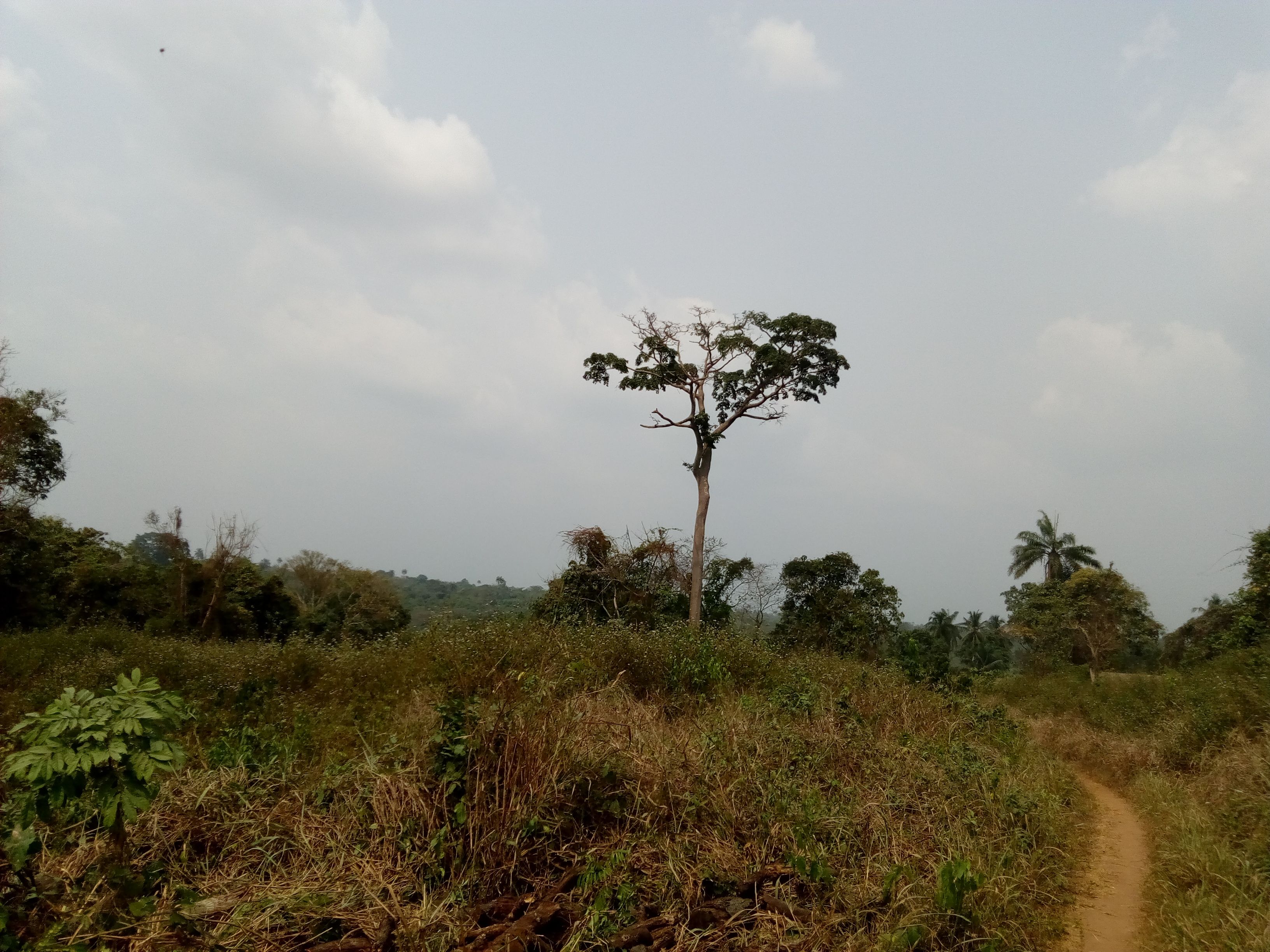It was on the 16th of January 2018, when we started a steel erection for a company using our machine (mobile crane) which took us 11 days to finish the phase one of it. during this process we had to camp in a nearby village. there i discover the IROKO tree which i saw for the first time in my life. I took the picture, then i had to make research on it and i thought of sharing it.



The Iroko tree (Yoruba) also known as Uko in Igbo, is a wonderful tree both in Legends and in actual modern uses.
It's scientific name is "Chlorophora excelsa", it is of the mulberry family and has strong streaky insect-resistant wood which is often used as a teak substitute.
At home in the Tropics of Africa, especially on the West Coast, it is a large hardwood. It is sometimes called Nigerian or
African Teak, although it is not of the teak family. The wood starts as yellow but darkens to a rich brown over time. The
Iroko tree is found in Angola, Benin, Cameroon, Congo, Ghana, Guinea, Mozambique under different names like Kambala, Mvule, Abang, Doussie, Odum, Intule, Tule etc.
The tree grows to an average height of 50 meters (164 feet) and is normally between 75 cm (2.3feet) to 250 cm (8.2 feet) in diameter. The tree-stem averages between 15 to 28 meters branch-free. Iroko looks vagely similar to teak. This is why it is sometimes called African-teak or Kambala-teak, a misleading European name.
SOURCE
USES
Due to the durability of the iroko wood, it is mainly used for construction work, domestic flooring, cabinet-work, outdoor furniture, boats, panelling, boat-building, instrument, frames and floors. Due to the overexploitation of the iroko, it has been suggested that it is replaced for certain uses with other similar species such as Lophira alata, difou, doussié, Morus mesozygia Stapf, Piptadeniastrum Africanum (Hook.f.) Brenan (dabéma), azobé, Nauclea diderrichii, bilinga or Afzelia spp.
The iroko tree can withstand an annual rainfall of less than 70 centimetres or six months of the dry season but inasmuch as there is a nearby body of water. Iroko is the dominant timber in international trade and Tanzania and Uganda had been the major suppliers of iroko in the past.
Iroko wood is used in many applications like cabinetmaking, boat-construction, domestic flooring, furniture and paneling as a substitute for teak, which it resembles both in colour (light brown to deep golden-brown) and in grain. It is very durable because it is rot and insect resistant. It is also used in some musical instruments due to its lively sound.
SOURCE
ADVANTAGES OF IROKO
Treatment of Stomach Problems
The milky latex and leaves from the iroko tree can be used to produce herbal medicines that can heal stomach problems such as dysentery.
The iroko leaves, bark, milky/yellowish latex and ashes are used for preparing herbal medicines for treating certain
ailments and diseases. The herbal medicine can also be used to unblock the throat from any blockages such as cough and cold. The iroko root can be decocted and used for treating female sexual infertility, asthma, piles, lumbago, spleen pain, galactagogue, oedema, scabies, wounds, ascites, sprains, dysmenorrhoea, gonorrhoea, venereal diseases, sprains, loss of hair, rheumatism and aphrodisiac.
Medicinal Purposes
Researchers reveal the presence of flavonoids, carbohydrate, proteins, tannins, saponins and alkaloids in the aqueous
extracts from different parts of the African teak, which make it capable of being used to treat diabetes, bronchitis,
leprosy, tiredness, heart problems, tumour reduction. Studies also reveal that the iroko is characterised by anti-pyretic,
antifungal, antibacterial, analgesic, anti-diuretic, hypoglycemic, antioxidant and anti-inflammatory properties thus can be used for treating several ailments.
Soil Enhancement Purposes
The iroko leaves, bark and ashes can serve as manure and mulch, which is used for farming produce. Mulch is a set of
material used to cover the surface of a vegetation of the soil in order to improve the fertility, conserve moisture and
boost the well-being of the soil.
Treatment of Gallstones
Iroko leaves can be decocted and taken for treating gallstones.
Ornamental Purposes
The iroko serves as a shade and a decorative tree.
Construction Purposes
The iroko is a high-quality timber with international recognition. It can be used for constructing roads, garden furniture,
framework, boat, doors, draining boards, houses, furniture, flooring, building, marine carpentry, gates, trucks, stairs,
charcoal, firewood, utensils, frames, cabinet work, musical instruments, toys, panelling and for any long-lasting building
purposes that require wood.
This is due to its resistance to external damages and insect attacks such as termites.
Erosion Control
Due to the thickness and durability of the iroko tree, it can be used for controlling erosion.
Dyeing Purposes
The iroko bark is used for producing dyes that can be used for dyeing clothes and leather.
Landmark Purposes
Some people plant the iroko tree as a landmark and to show boundaries between lands, towns, farms and villages.
Dermatological Purposes
The milky latex can be used for treating skin burns, eczema, wounds, sores and other skin problems.
Treatment of Mental Disorders
Some people believe that eating iroko leaves is capable of treating mental disorders.
Additionally, its roots and leaves are medicinal, it is also used for "local" twig toothbrushes and of course its branches
burn slowly and are a good source of cooking firewood and its fruits are loved by Bats and Monkeys.
Its usefulness is further aided by its wide availability, no trade restrictions and the small amount of adverse effects from Iroko dust, limited to asthma, dermatitis and nettle rash.
ANOTHER ACTUALITY
Scientific Name: Chlorophora excelsa
Common Names: African Teak, Kambala, Mvule, Abang, Doussie, Odum, Intule, Tule
Trade Name: Harwood, Iroko
Family Name: Moraceae
Regions of Distribution: These trees are found in Tropical Africa
Countries of Distribution: Nigeria, Gambia, Ghana, Cameroon, Sierra Leone, Angola, Zaire.
It's Appearance
Color: The wood displays a yellowish hue which darkens to a rich brown as the wood ages. If untreated, the wood will turn to a silvery-grey color.
Properties
Dimensional stability: This wood has an excellent stability. It dries rapidly with very little shrinkage.
Hardness: Fairly hard wood with a Janka rating of 1260
Origin: Iroko trees are only found in Africa
Availability: Moderate availability.
It's Average and maximum lifespan: The average lifespan of an Iroko tree is approximately two hundred years, although there are some other trees which are recorded that are as old as four hundred years.

Hi! I am a robot. I just upvoted you! I found similar content that readers might be interested in:
https://globalfoodbook.com/incredible-benefits-of-iroko
Downvoting a post can decrease pending rewards and make it less visible. Common reasons:
Submit